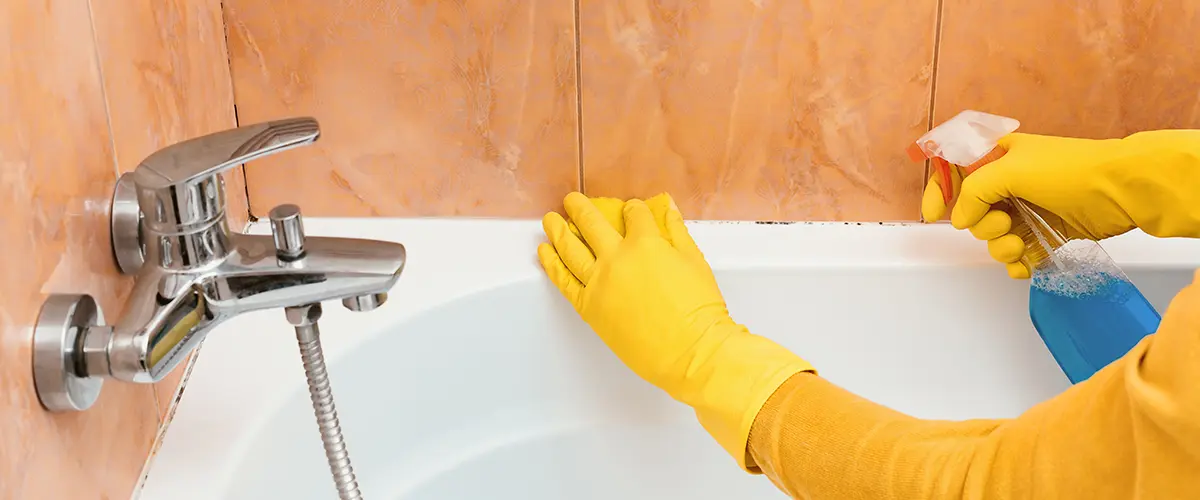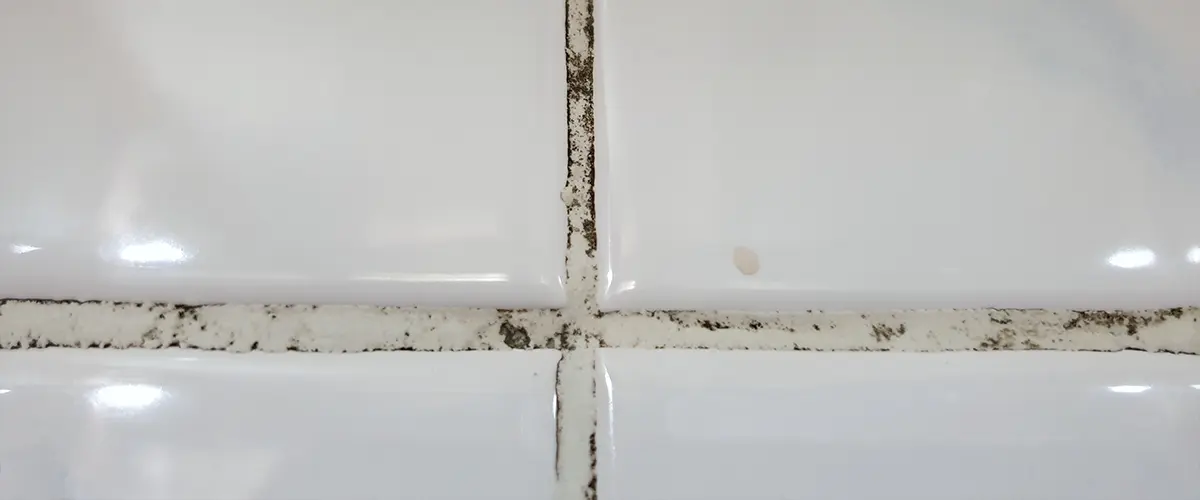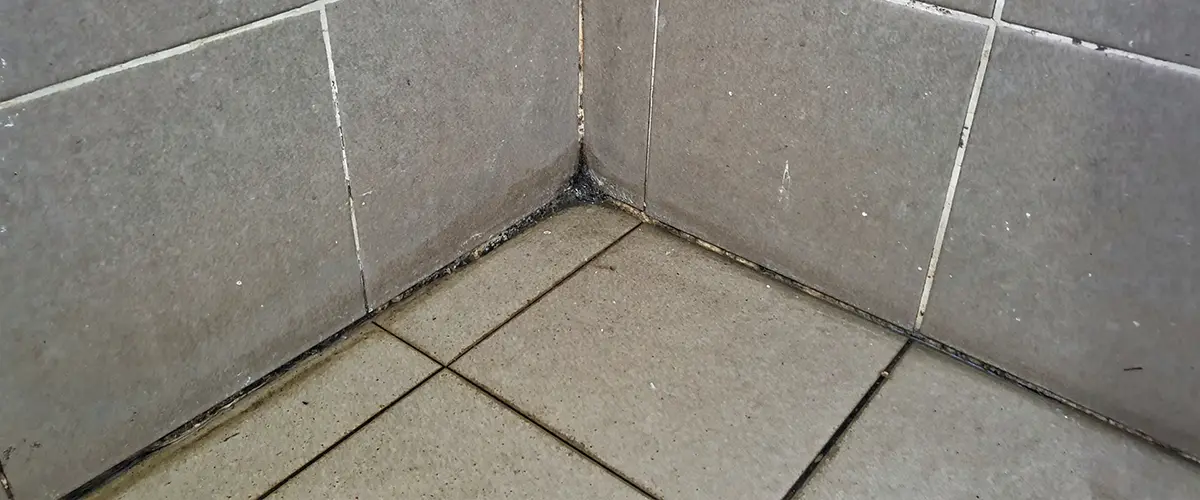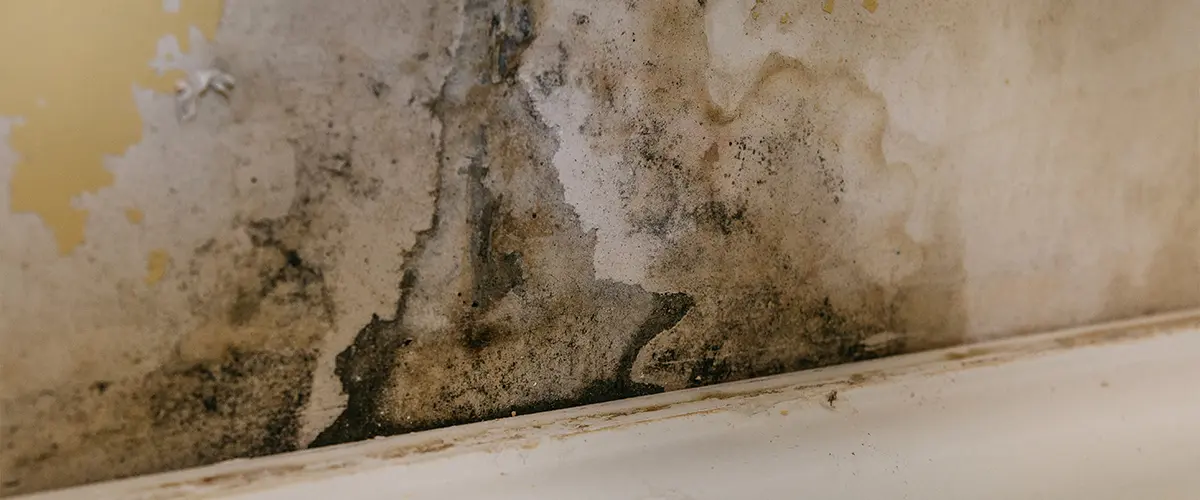Mold is a common problem in many homes, and the bathroom is a particularly popular spot for mold to grow and, even worse, spread.
This is because most bathrooms remain damp and humid after a shower or a bath.
If you don’t take preventive measures, mold can quickly grow and become an ugly problem that harms your health.
This is a quick guide on how to prevent mold in showers and achieve a bathroom mold free!

What Is Mold?
Mold is a type of fungi that thrives in moist and decaying organic matter. This fungal growth comes in various hues – from yellow to black – and can be found both inside homes and outside, regardless of the season or climate. Mildew is another term commonly used when referring to molds.
It’s no surprise when you find mold developing in the shower – after all, showers are constantly damp.
To protect your health and prevent further growth of this pesky organism, taking preventive measures to keep it from growing in your shower is essential.
If you’re looking for a more in-depth explanation of mold, check out this article from CDC about mold and its consequences on your health.
How To Check If You Have Mold In Your Bath
Mold detection can be confusing, yet there are a few tell-tale signs.
Some ways to identify bathroom mold are:
- Check for black, green, or white patches on your bathroom's walls, ceiling, and flooring - this is the most specific indicator of mold presence.
- If you sense an unpleasant musty fragrance in the area, mold growth may also have occurred.
- White patches on walls or ceilings are also a sign of mold. This can be caused by humidity levels built up over time and condensation from showers, sinks, etc.
- Allergy symptoms - if you are experiencing allergy symptoms, such as a runny nose, sneezing, and itchy eyes, then it's possible that mold is the cause.
If you’re uncertain about whether or not mold is an issue, it’s prudent to speak with a seasoned expert. They can inspect your bathroom and recognize any potential fungi in the area.

The Health Risks Associated With Mold Exposure
If you experience any respiratory issues, skin irritation, or allergies, it might be due to the presence of mold. It’s crucial that you take action quickly, as mold can cause long-term health problems if left untreated.
In addition, mold can also cause more severe health problems such as:
- Respiratory problems: asthma, wheezing, and difficulty breathing
- Allergic reactions: rashes, hives, and sneezing
- Sinus infections
- Fever
- Fatigue
If you suspect that your health has been affected by mold, medical aid must be sought. A physician can diagnose and treat the condition properly after assessing the situation.
How To Prevent Mold From Growing?
While it can seem overwhelming to protect your bathroom from mold, there are numerous steps you can take to make the process less challenging. To begin with, gain an understanding of the common reasons for moisture and mildew in bathrooms so that you know how to prevent them.
The most common causes of mold growth:
- Poor ventilation
- Leaky pipes
- Clogged drains
- Humidity levels over 50%
Don’t let mold growth become a problem in your bathroom! Here are some simple ways to protect against it:

Remove Mold-Prone Materials From The Bathroom
Bathroom mold is primarily found in showers when the grout or caulk is of poor quality. If the grout or caulk has been cracked or damaged in any way, moisture can leak through and create a conducive environment for the growth of mold spores.
Removing any carpeting from the bathroom is also a good idea, as it can harbor mold spores.
Install A Ventilation Fan
To keep humidity and mold at bay, install a reliable exhaust bathroom fan. Cleaning it regularly will guarantee its efficacy in providing maximum protection from moisture damage.
Keep The Bathroom Clean And Dry
To ensure a black mold-free bathroom, start by creating an environment that is clean and dry. Regularly wipe down any wet surfaces after each use, and don’t forget to hang up or store damp towels properly. Remember: the goal is to keep moisture away.
Clean The Bathroom Walls
Give your bathroom surfaces a thorough scrubbing at least once every week with bleach or white vinegar blended with hot water and baking soda to eradicate any germs that can cause persistent mold in tiles, grout lines, etc. After you’re done cleaning the area, be sure to dry it thoroughly, so there is no standing water remaining.
If you have a glass shower door, we’d also recommend you wipe down the water on it as well. A towel will work just fine.
Reduce Humidity
If you want to keep the humidity in your shower at a minimum and prevent bathroom mold build-up, an effective solution is to turn off the water while lathering or shampooing. This will substantially reduce the amount of moisture vaporized into the air but will also save you a lot of water.
To reduce the humidity levels in your bathroom, it’s a good idea to open a window or the bathroom door after you shower so that some moisture can escape. This simple action will help make sure your entire bathroom stays dry and comfortable.
Reduce Mold Spores With A Dehumidifier
By utilizing a dehumidifier to reduce the humidity levels in your bathroom regularly, you can protect yourself from the growth of hazardous mold.
If you find that these tips do not apply to your unique circumstance, it’s likely time to reach out to a professional. A specialist can identify the source of moisture and determine which mold removal products will be most effective in solving your problem.
How To Clean Up Mold Efficiently?
If you discover mold in your shower, you must act quickly and remove it immediately. Here are some useful strategies for eliminating bathroom mold:

1. Wear gloves and a mask
When attempting to eradicate black mold, it is critical that you don protective gloves and a mask to shield yourself from potential toxins. Additionally, ensure you are wearing clothes that can get damaged – as the spores may be difficult to fully remove even with extensive cleaning efforts.
2. Remove the moldy material
To eliminate black mold, you must first remove any items or surfaces contaminated with it. A scrub brush and vacuum cleaner are helpful tools to do this efficiently.
3. Dispose of the moldy material
To protect the rest of your home from contamination, it’s essential to dispose of moldy materials safely. The best way to do so is by securing them in a sealed plastic bag and immediately discarding them with regular household garbage.
4. Clean the bathroom mold
Now that all visible mold has been removed, it is time to disinfect the affected area. Scrubbing with a bleach solution or spraying on an anti-fungal agent will clear up any residual contamination.
5. Treat the area for future mold growth
Finally, to prevent any black mold from reappearing in the future, finish cleaning your shower by applying a sealant or anti-fungal paint on your bathroom and shower walls. This will ensure you have a bright and safe bathroom for years.

If left unchecked, mold can grow in the grout lines of tiled showers, leading to unsightly stains and health hazards. However, choosing solid surface shower walls can reduce mold growth, as they are grout-free and easier to maintain.
Conclusion
For homeowners in Washington and throughout the state, mold is quite common and occurs due to flooding as well as water damage from a leaky roof, busted pipe, and so forth. In fact, mold can grow as soon as 24 – 48 hours and spread quickly.
If you have black mold in your shower, it is crucial to take care of the problem as soon as possible.
There are many steps to take, from cleaning surfaces with bleach or anti-fungal sprays all the way to using a dehumidifier and sealant to prevent future mold growth.
If you are struggling with severe mold issues and need to remodel your bathroom quickly and affordably, Offcut Interiors can help you out, anywhere in Kirkland, Bellevue, and surrounding areas.
Give us a ring at (480) 999-6134 and let’s discuss what your options are regarding the mold issues in your space.
